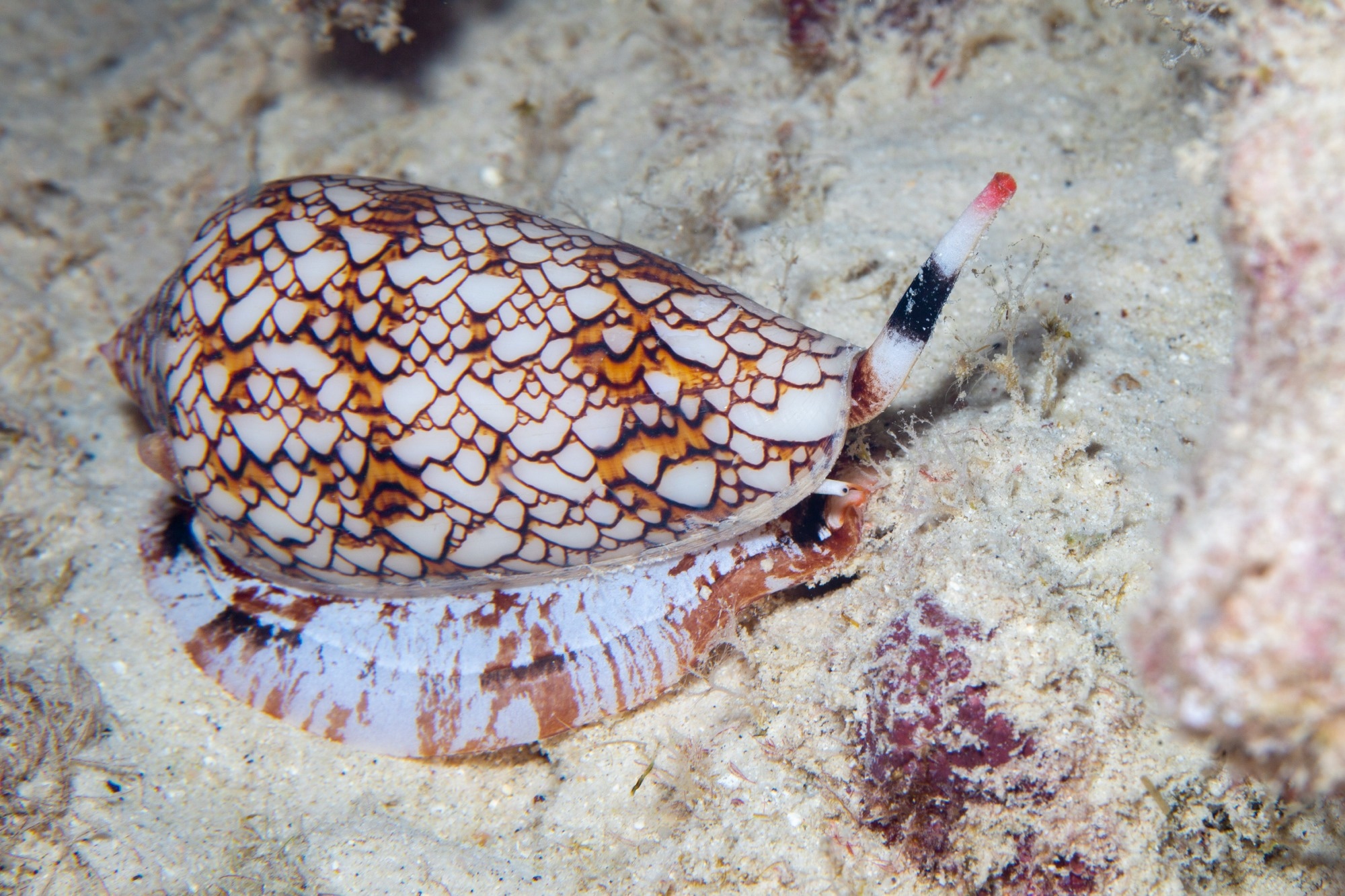Scientists harness artificial intelligence and molecular dynamics to reveal how a cone snail toxin selectively binds to fish potassium channels, paving the way for new insights in ecological systems and safer drug development.
 Cone snail crawling across the seafloor at night in Hawaii. Image Credit: RobJ808 / Shutterstock
Cone snail crawling across the seafloor at night in Hawaii. Image Credit: RobJ808 / Shutterstock
When scientists develop new molecules- whether for agriculture, species control, or life-saving drugs- it's important to know exactly what their targets are. Thoroughly understanding a molecule's intended and unintended interactions is crucial for ensuring its safety and efficacy.
A cone snail toxin known to affect both insects and fish inspired Weizmann Institute scientists to develop a new way of finding molecular targets. By combining artificial intelligence with traditional research methods, they created a pipeline that can predict which proteins natural toxins will affect, with implications for both ecological research and drug development. The work will be presented at the 69th Biophysical Society Annual Meeting, to be held February 15 - 19, 2025, in Los Angeles.
Izhar Karbat, PhD, and Eitan Reuveny, PhD, both scientists at the Weizmann Institute in Israel, wanted to understand how the cone snail toxin Conkunitzin-S1 (Cs1) impacts fish, which are cone snails' prey. Cs1 is a toxin that blocks potassium channels, essential gateways for cell function. It has a potent effect on fruit flies and other insects but doesn't impact mammals or other creatures like mollusks. However, exactly what its targets were in fish remained elusive.
"Three years ago, we tried our best tools at the time to find the target of the Conkunitzin toxin, and we failed because the tools were not good enough. And then came a big revolution in structural biology driven by artificial intelligence," said Karbat. In their latest attempt, he and Reuveny used a two-pronged computational approach to identify the fish potassium channels most vulnerable to Cs1.
First, they used AlphaFold, a powerful AI program, to predict how the toxin might bind to different fish potassium channels. Then, they developed ET3, a new AI model that analyzes how water molecules move around these channels. ET3 was trained to identify irregularities in the movement of water molecules around the "selectivity filter"-the part of the channel that controls which ions can pass through. Blocking this filter essentially shuts down the channel.
By using ET3 to analyze a wide range of fish potassium channels, far beyond what would have been possible with previous methods, they were able to identify the specific channels that Cs1 targets and how it prevents them from functioning correctly. Basically, if potassium channels are like tiny doors that control the flow of ions in and out of cells, Cs1 acts like a lock that jams these doors shut.
"Using molecular dynamics and the new AI-driven structural tools we were able to find the small subset of channels in fish which bind our toxins with high affinity and are probably the real target of the cone snail," said Karbat.
"This new pipeline offers exciting opportunities and future prospects with ecological studies to study real chemical interactions in real ecological systems," Karbat said. He added that it could also be used in drug development to identify targets based on a drug's structure or to identify potential off-target interactions.
As an example, Karbat said, "if you develop a drug that would activate a channel in the human brain, you wouldn't want the same drug to affect a channel in the human heart and cause a heart attack."
"The power of this pipeline is that we can concentrate on a target, or any molecule that we are interested in, and find its match," said Reuveny.